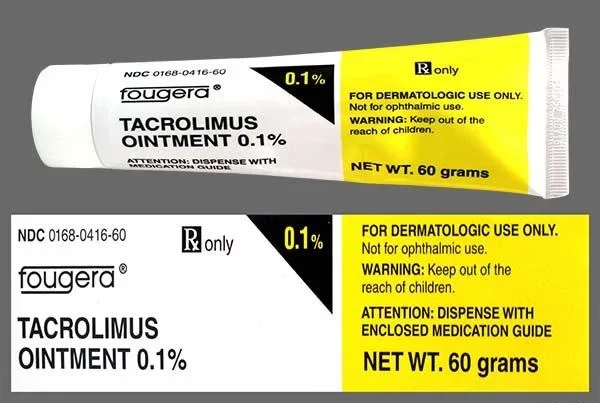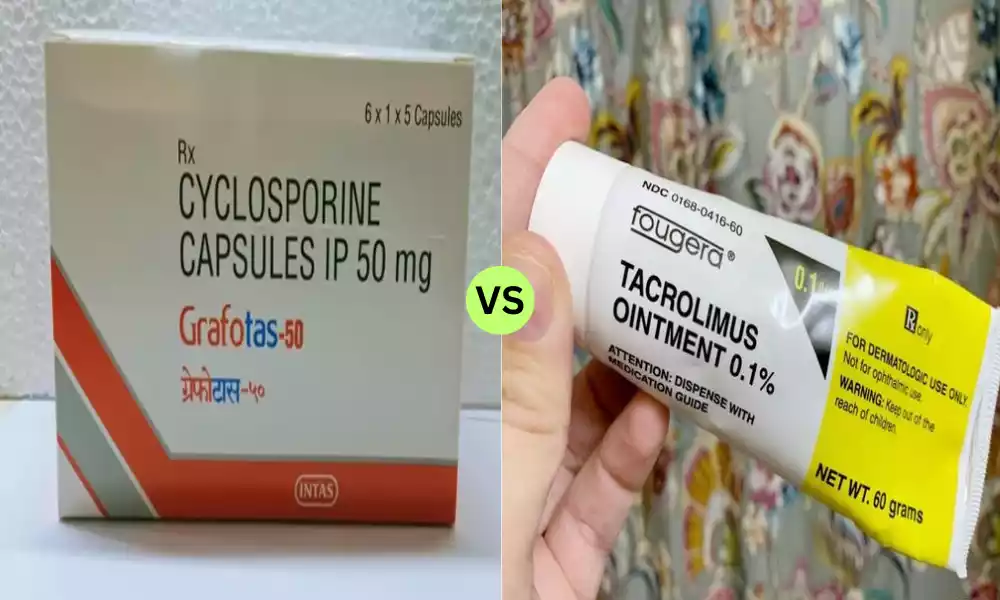Introduction
Immunosuppressive medications have revolutionized the field of transplantation and the management of autoimmune diseases. Among these drugs, two prominent options are Cyclosporine and Tacrolimus. These drugs play a pivotal role in preventing organ rejection and treating various autoimmune conditions. In this 8000-word article, we will delve deep into the characteristics, mechanisms of action, medical applications, side effects, key differences, and future prospects of Cyclosporine and Tacrolimus. Through a detailed exploration of these drugs, patients, healthcare professionals, and researchers can make more informed decisions about their use in different clinical scenarios.
What is Cyclosporine?
Cyclosporine, also known as Cyclosporin A, is a potent immunosuppressive medication that has significantly improved the success rates of organ transplantation. It was first discovered in the late 1970s from the fungus Tolypocladium inflatum gams. Since then, it has been widely used to prevent graft rejection and to manage various autoimmune diseases.

- Cyclosporine Structure and Composition: Cyclosporine is a cyclic peptide composed of 11 amino acids, and its chemical structure is crucial to its immunosuppressive activity. This cyclic structure, which includes non-proteinogenic amino acids, allows Cyclosporine to interact with specific proteins in the immune system.
- History and Development: The discovery of Cyclosporine was a significant milestone in transplantation medicine. Prior to its introduction, organ transplants faced a major challenge due to rejection by the recipient’s immune system. Cyclosporine revolutionized transplantation by suppressing the immune response, thereby allowing transplanted organs to function successfully.
- Forms and Brand Names: Cyclosporine is available in various forms, including oral capsules, liquid solutions, and intravenous preparations. Brand names like Neoral and Sandimmune are commonly associated with Cyclosporine.
How Does Cyclosporine Work?
Cyclosporine’s mechanism of action is intricate and directly targets the immune system. The drug mainly acts by inhibiting T-cell activation, which plays a central role in immune responses. To understand how Cyclosporine works, one must look at its interactions within the immune system:
- Calcineurin Inhibition: Cyclosporine primarily targets a protein called calcineurin within T-cells. Calcineurin is essential for the activation of T-cells. By inhibiting calcineurin, Cyclosporine prevents T-cell activation and their subsequent proliferation.
- Cytokine Inhibition: In addition to calcineurin inhibition, Cyclosporine also suppresses the production of pro-inflammatory cytokines, such as interleukin-2 (IL-2). This further reduces immune activity and the body’s response to foreign substances.
- Immunosuppressive Properties: By blocking T-cell activation and cytokine production, Cyclosporine effectively dampens the immune system’s response. This suppression is essential in the context of organ transplantation to prevent graft rejection, as well as in the management of autoimmune diseases.
Medical Uses of Cyclosporine
Cyclosporine has a broad range of medical applications, including but not limited to the following:
- Organ Transplantation: Cyclosporine is an integral component of immunosuppressive regimens for organ transplant recipients. It is used to prevent the immune system from recognizing and attacking the transplanted organ. Kidney, heart, liver, and lung transplant recipients often receive Cyclosporine.
- Autoimmune Diseases: Cyclosporine is effective in managing various autoimmune diseases, such as rheumatoid arthritis, psoriasis, and inflammatory bowel disease (IBD). It helps alleviate symptoms and control the autoimmune response.
- Ophthalmic Uses: In ophthalmology, Cyclosporine is employed as an eye drop (Cyclosporine ophthalmic emulsion) to treat conditions like dry eye disease.
- Topical Applications: Some topical forms of Cyclosporine are used in dermatology for the treatment of conditions like atopic dermatitis.
Side Effects of Cyclosporine
Cyclosporine, like any medication, can have side effects, and patients and healthcare professionals should be aware of these potential complications. Common side effects include:
- Nephrotoxicity: Cyclosporine can harm the kidneys, leading to conditions such as acute kidney injury or chronic nephropathy.
- Hypertension: Elevated blood pressure is a common side effect, and regular monitoring is essential.
- Neurological Effects: Patients may experience symptoms like tremors, headaches, and paresthesia (tingling or numbness).
- Gastrointestinal Distress: Vomiting, nausea and diarrhea are all possible side effects of infection.
- Gingival Hyperplasia: Overgrowth of gum tissue is a potential side effect, which can be managed with good oral hygiene.
- Hypertrichosis: Abnormal hair growth on the face and body may occur.
- Hyperlipidemia: Elevated blood lipid levels can result from Cyclosporine use.
Individuals will experience adverse effects differently. Their severity and frequency depend on various factors. Close monitoring by healthcare providers and appropriate adjustments to the medication regimen can help mitigate these issues.
What is Tacrolimus?
Tacrolimus, often marketed under the brand name Prograf, is another widely used immunosuppressive medication. Like Cyclosporine, Tacrolimus is instrumental in preventing organ rejection after transplantation and managing autoimmune diseases.

- Tacrolimus Structure and Composition: Tacrolimus is a macrolide antibiotic derived from the bacterium Streptomyces tsukubaensis. Its chemical structure contains a complex lactone ring, which plays a key role in its immunosuppressive activity.
- History and Development: Tacrolimus was discovered in Japan in the 1980s. Its approval for use in organ transplantation occurred in the 1990s and marked a significant advancement in immunosuppressive therapy.
- Forms and Brand Names: Tacrolimus is available in various forms, including oral capsules, liquid solutions, and intravenous preparations. The most common brand name is Prograf.
Mechanism of Action of Tacrolimus
Tacrolimus operates through a mechanism of action similar to Cyclosporine, focusing on T-cell inhibition. Its primary action involves inhibiting the activation of T-cells by preventing the production of interleukin-2 (IL-2), a critical cytokine in immune responses. Here’s a detailed look at how Tacrolimus works:
- Calcineurin Inhibition: Like Cyclosporine, Tacrolimus primarily inhibits calcineurin, which is crucial for T-cell activation. This inhibition prevents the transcription of IL-2 and other pro-inflammatory cytokines.
- T-Cell Suppression: By inhibiting IL-2 production, Tacrolimus suppresses T-cell activation and proliferation, thereby reducing the immune response.
- Lymphokine-Activated Killer (LAK) Cells: Tacrolimus has been found to inhibit the activation and function of LAK cells, which play a role in immune responses against tumor cells.
Medical Applications of Tacrolimus
Tacrolimus is used in a range of medical applications:
- Organ Transplantation: Tacrolimus is a cornerstone in the immunosuppressive regimens for solid organ transplant recipients. It is often preferred in liver and heart transplants.
- Autoimmune Diseases: Like Cyclosporine, Tacrolimus is employed to manage autoimmune diseases such as rheumatoid arthritis, lupus, and dermatomyositis.
- Dermatological Use: Tacrolimus ointment is used topically for treating inflammatory skin conditions like atopic dermatitis.
- Ophthalmic Use: Tacrolimus eye drops are under investigation for treating ocular surface diseases and ocular inflammation.
Side Effects of Tacrolimus
Tacrolimus, like Cyclosporine, can cause a range of side effects, and careful monitoring is essential. Common side effects include:
- Nephrotoxicity: Tacrolimus can affect kidney function, leading to conditions such as acute kidney injury or chronic nephropathy.
- Neurological Effects: Patients may experience tremors, headaches, and sleep disturbances.
- Hypertension: Elevated blood pressure is a potential side effect.
- Gastrointestinal Distress: Nausea, diarrhea, and abdominal discomfort may occur.
- Hyperglycemia: Elevated blood sugar levels are common in some patients taking Tacrolimus.
- Hyperkalemia: High levels of potassium in the blood can be a concern.
- Dermatological Issues: Skin-related problems, such as acne and increased susceptibility to skin infections, are possible side effects.
Just like with Cyclosporine, the severity and occurrence of these side effects can vary among individuals, and healthcare providers should closely monitor patients to address these issues promptly.
Comparison table of Cyclosporine and Tacrolimus
Here’s a comparison table of Cyclosporine and Tacrolimus:
| Aspect | Cyclosporine | Tacrolimus |
|---|---|---|
| Chemical Structure | Cyclic peptide | Macrolide lactone |
| Potency | Less potent | More potent |
| Metabolism | Primarily in the liver | Liver and intestinal metabolism |
| Nephrotoxicity | Potential risk | Higher risk |
| Neurological Effects | Tremors, headaches, paresthesia | Tremors, headaches, sleep disturbances |
| Hypertension | Common side effect | More commonly reported |
| Gastrointestinal Distress | Nausea, vomiting, diarrhea | Nausea, diarrhea, abdominal discomfort |
| Hyperglycemia | Less likely | More likely |
| Hyperlipidemia | More common | Less common |
| Dermatological Issues | Gingival hyperplasia, hypertrichosis | Skin-related problems, acne, susceptibility to skin infections |
| Transplant Preference | Common in various transplants | Often preferred in liver transplants |
| Topical Use | Ophthalmic preparations for dry eye | Topical ointment for inflammatory skin conditions |
| Other Medical Applications | Rheumatoid arthritis, psoriasis, IBD | Rheumatoid arthritis, lupus, dermatomyositis |
| Brand Names | Neoral, Sandimmune | Prograf |
This table highlights the differences in chemical structure, potency, metabolism, side effects, and medical applications between Cyclosporine and Tacrolimus. The choice of medication depends on individual patient profiles, medical conditions, and specific clinical needs.
Choosing Between Cyclosporine and Tacrolimus
The choice between Cyclosporine and Tacrolimus depends on various factors, including the patient’s medical condition, organ transplant type, individual patient characteristics, and potential drug interactions. Healthcare professionals must carefully consider the following when deciding between the two drugs:
- Transplant Type: In organ transplantation, the choice of immunosuppressive drug may be influenced by the type of organ being transplanted. For instance, Tacrolimus is often preferred in liver transplantation.
- Patient Characteristics: Individual patient factors, such as age, weight, medical history, and tolerance for side effects, can influence the choice of medication.
- Drug Interactions: The patient’s existing medication regimen and potential drug interactions must be considered when selecting Cyclosporine or Tacrolimus.
- Risk Profile: Healthcare providers must assess the patient’s risk for certain side effects, such as nephrotoxicity or hypertension, and select the medication that aligns with the patient’s risk profile.
- Monitoring: The frequency and intensity of monitoring needed for a particular patient’s response to the chosen immunosuppressive drug should be factored into the decision.
- Patient Preferences: Patient preferences and their ability to comply with dosing regimens, such as oral versus intravenous, can also influence the choice.
- Cost: The cost of these medications and their availability can play a role in the decision, especially for patients without insurance coverage.
The decision regarding Cyclosporine or Tacrolimus should be made on a case-by-case basis, taking into account the specific needs and characteristics of the patient.
Advancements in Immunosuppressive Medications
Immunosuppressive medication research continues to advance, aiming to improve the efficacy and reduce the side effects associated with drugs like Cyclosporine and Tacrolimus. Key advancements and areas of research include:
- Targeted Therapies: Researchers are exploring more precise and targeted immunosuppressive medications that can modulate the immune system in a more specific manner, reducing off-target effects.
- Biologics: Biologic agents, such as monoclonal antibodies, are being developed to selectively target immune components involved in autoimmune diseases.
- Novel Immunosuppressants: Scientists are developing new classes of immunosuppressive drugs with unique mechanisms of action and potentially improved safety profiles.
- Personalized Medicine: The field of pharmacogenomics is gaining traction, allowing for the customization of immunosuppressive regimens based on an individual’s genetic makeup.
- Gene Editing: Emerging technologies like CRISPR-Cas9 offer the potential to edit the genes responsible for immune responses, potentially reducing the need for systemic immunosuppression.
The Future of Cyclosporine and Tacrolimus
Cyclosporine and Tacrolimus remain essential drugs in transplantation and autoimmune disease management. While advancements in immunosuppressive medications continue, these two drugs are expected to maintain their relevance for years to come. Future developments might focus on optimizing dosing regimens, reducing side effects, and improving patient outcomes.
Some potential directions for the future of Cyclosporine and Tacrolimus include:
- Improved Formulations: Developing more convenient and patient-friendly formulations, such as extended-release tablets or injectables, to enhance medication adherence.
- Reducing Side Effects: Continued efforts to mitigate nephrotoxicity, hypertension, and other side effects associated with these drugs.
- Precision Medicine: Utilizing genetic and molecular profiling to personalize immunosuppressive regimens for better outcomes and fewer side effects.
- Combination Therapies: Investigating the potential benefits of combining Cyclosporine, Tacrolimus, or other immunosuppressive drugs with newer agents to achieve optimal immune modulation.
- Biosimilars: The development and approval of biosimilars for Cyclosporine and Tacrolimus may increase availability and reduce costs.
Patient Stories
The human aspect of medical treatments is vital. Hearing the experiences of patients who have undergone transplantation or managed autoimmune conditions with Cyclosporine or Tacrolimus can provide valuable insights into the challenges and successes associated with these medications.
Patient A: A heart transplant recipient who has been on Tacrolimus for several years. Their story highlights the importance of post-transplant medication adherence and routine check-ups to ensure graft survival.
Patient B: A young adult with rheumatoid arthritis who has found relief through Cyclosporine. Their journey emphasizes the challenges of living with autoimmune diseases and the impact of effective immunosuppressive therapy on their quality of life.
Patient C: A dermatology patient who has benefited from Tacrolimus ointment in managing chronic skin conditions. Their experience sheds light on the importance of topical immunosuppressive treatments in dermatological care.
Final Opinion
Cyclosporine and Tacrolimus stand as cornerstone treatments in transplantation and autoimmune disease management. While they share commonalities, they differ in key aspects, allowing for tailored medical approaches. The choice between these drugs depends on individual patient profiles and specific clinical needs. Looking ahead, ongoing research aims to enhance their therapeutic potential, reducing side effects, and optimizing patient outcomes. Both medications have significantly improved the lives of many, and their continued use will be marked by refined treatment strategies and improved patient well-being.

